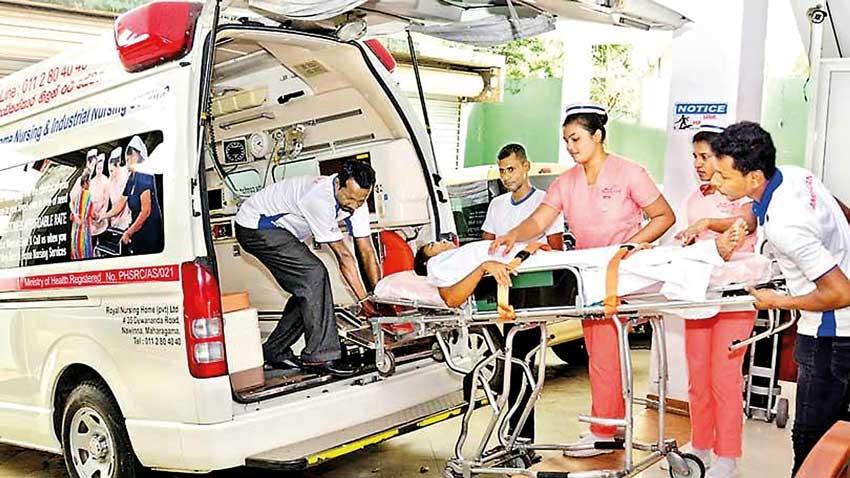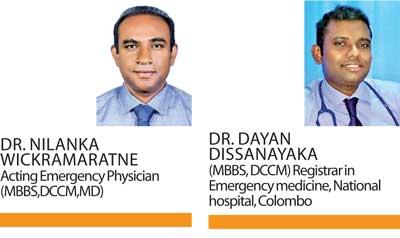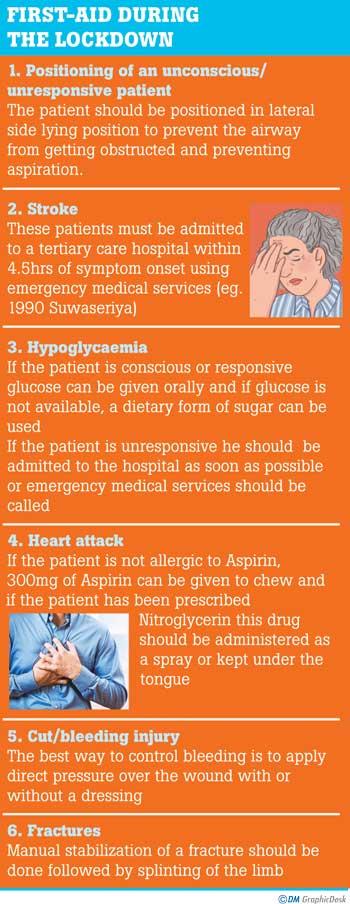Reply To:
Name - Reply Comment

 Ever since the lockdown which was later followed by a relaxation of the curfew, people have been recklessly running here and there making them more vulnerable to potential injuries. Furthermore, with the social distancing etiquettes which are encouraged, people visit hospitals; even if these places are hot-spots for carrying the virus.
Ever since the lockdown which was later followed by a relaxation of the curfew, people have been recklessly running here and there making them more vulnerable to potential injuries. Furthermore, with the social distancing etiquettes which are encouraged, people visit hospitals; even if these places are hot-spots for carrying the virus.
 In a current setting like that we had a discussion with Dr Nilanka Wickramaratne, Acting Emergency Physician (MBBS,DCCM,MD) and Dr Dayan Dissanayaka, (MBBS, DCCM) Registrar in Emergency medicine, National hospital, Colombo on how first-aid can be useful in managing some of the commonly come across scenarios, in order to add quick yet important efforts to help save the lives of patients until they are brought to hospital.
In a current setting like that we had a discussion with Dr Nilanka Wickramaratne, Acting Emergency Physician (MBBS,DCCM,MD) and Dr Dayan Dissanayaka, (MBBS, DCCM) Registrar in Emergency medicine, National hospital, Colombo on how first-aid can be useful in managing some of the commonly come across scenarios, in order to add quick yet important efforts to help save the lives of patients until they are brought to hospital.
“Yes it is relevant that the general public needs to be advised that in the event of certain life threatening emergencies prompt action needs to be instituted at home and urgent medical assistance sort by contacting 1990. They need to be reassured that all health care facilities are prepared to attend to any life threatening emergency with protection for the patient from Covid 19” says Dr Wickramaratne.
Let’s see some of those commonly come across scenarios in day-to -day life and how as lay people we can quickly act in order to save the life of the patient until medical care is sought.

1. Positioning of an unconscious/ unresponsive patient
Patients can be unconscious for a variety of reasons like stroke, hypoglycaemia etc. They are exposed to the increased risk of obstructing their airways and aspiration so the main priority in an unconscious patient is to maintain the airway open and prevent aspiration. So in a setting like that the patient should be positioned in lateral side lying position to prevent the airway from getting obstructed and prevent aspiration.
2. Stroke
“Each year about 15 million people suffer from strokes. Early recognition and admission to a hospital is vital in stroke management. Hence it is extremely important to know that immediate medical care is crucial rather than trying out first-aid or home-based therapy”
When it comes to a stroke, patients would usually present with face, arm, leg weakness or numbness, slurred speech, generalised weakness or lightheadedness or altered mental status. These patients must be admitted to a tertiary care hospital within 4.5hrs of symptom onset using emergency medical services (eg. 1990 suwaseriya) because every minute matters when it comes to conditions like these.
3. Hypoglycaemia
(Blood sugar< 70mg/dl)
Diabetes is a very common condition in our society and it can be frequently complicated with hypoglycaemia or hyperglycaemia.
Hypoglycaemia is a sudden and life threatening event presenting with symptoms such as hunger, agitation, sweating, and tremor that may lead to unconsciousness. Hypoglycaemia needs rapid identification and correction so patients them selves as well as the care takers should be vigilant about the possible ways of presentation, to identify the attacks.
If the patient is conscious or responsive glucose can be given orally and if glucose is not available, a dietary form of sugar can be used (sugar/sugary drink/ tea).
If the patient is unresponsive or unable to swallow, then oral treatment should be withheld due to the risk of aspiration and should be admitted to the hospital as soon as possible or emergency medical services should be called in order to prevent possible complications which could be fatal.
4. Heart attack
Chest pain is a common symptom among people and can be due to various fatal as well as non-fatal conditions. However, fatal conditions presenting with chest pain can be extremely serious, so it is always better to consider this as a symptom which requires medical advice to carry out further investigations if necessary.
Chest pain accompanied by the following symptoms is more likely to be due to a heart attack.
If a patient has these symptoms he should be rushed to the hospital. Meanwhile, if the patient is not allergic to Aspirin, 300mg of Aspirin can be given to chew and if the patient has been prescribed Nitroglycerin this drug should be administered as a spray or kept under the tongue”
5. Cut/bleeding injury
Control of bleeding is crucial when providing first-aid when it comes to such scenarios. The best way to control bleeding is to apply direct pressure over the wound with or without a dressing. Localised cold therapy (Ice) with or without pressure is beneficial in minor injuries or closed bleeding in extremities. Use of tourniquet when direct wound pressure, cannot control severe bleeding in a limb is highly effective, but this may need training to ensure safety and effectiveness. Depending on the severity of the injury and the bleeding observed, patients should be rushed to the hospital for further care.
6. Fractures
When there’s a fracture, it is not advisable to attempt straightening of the angulated long bone fracture. Manual stabilisation of a fracture should be done followed by splinting of the limb.
Splinting the fractured limb will reduce the movement, limit pain and reduces the chance of further injury. Splinting (immobilization) should include the joint above the break and below.
Once the initial stabilisation is established this way, the patient should be rushed to the hospital in order to go ahead with further investigations and management.
The take home message is to be judgemental about the severity of the condition of your loved one and if you feel like first-aid would not be of any use, but immediate medical care will be, do not think twice, but bring the patient to the hospital as soon as possible and let the experienced health care professionals handle the rest.